Australia So Much to See
The Wabma Kadarbu Mound Springs Conservation Park
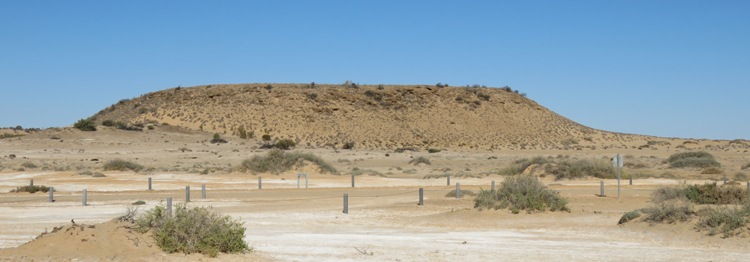
The name of the conservation park is derived from the Arabana name used for the extinct mound spring, also known as Hamilton Hill (pictured
above) meaning snake's head, in reference to the profile of Hamilton Hill. This can be seen just across from Blanche Cup. See story below. Park entry fees apply.
Around six kilometres south east of Coward Springs, we turned into this park and found the track in good, although potholed where
it crosses the outflows from the springs, which run on to form a salt pan.
The first, known as “Blanche Cup” (at right), has water that is cold and appears still, as it overflows down a fast flowing tiny cascade
down the side of the mound (below).
The larger hill across from Blanche Cup is and extinct mound spring, known as Hamilton Hill
(photo at top of page).
Then settlers came and many things changed. The area was trampled and rubbished. A tree next to the spring representing
an ancestor in the snake Creation Story was cut down and used for firewood. The water pressure has altered, and he roars and
twisted bubbles have disappeared. Mound springs were of immense utilitarian importance to Aboriginal people, particularly as
places to fall back to in times of drought. This is reflected in the large amount of occupational debris to be found around the springs.
The brackish taste of the spring water was probably not highly appealing but the springs allowed Aboriginal people to survive the
dry times.
Noted explorer John McDouall Stuart had several expeditions through this springs country and during his second expedition
in 1859 named Elizabeth Springs after the daughter of one of his sponsors, James Chambers. Blanche Cup was named after Blanche, wife
of Governor MacDonnell.
The Bubbler was once a spring that roared, throwing twisted bubbles half a metre high. There are stories of old men whistling
a special chant to make it bubble out higher and louder.
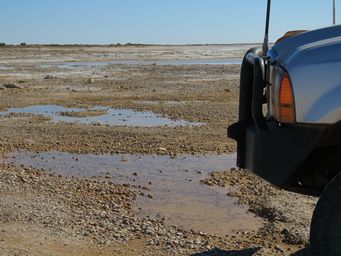
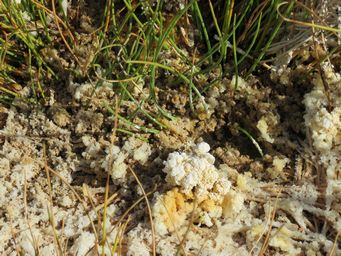
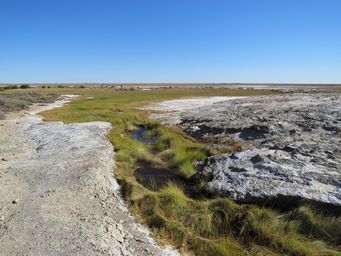
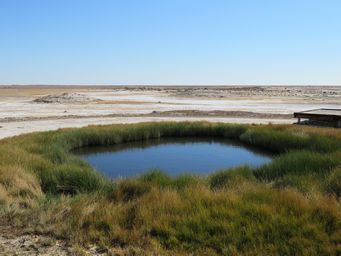
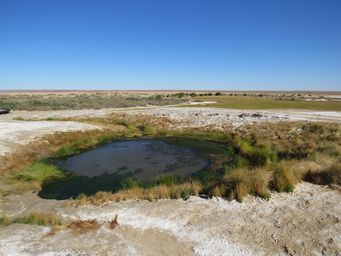
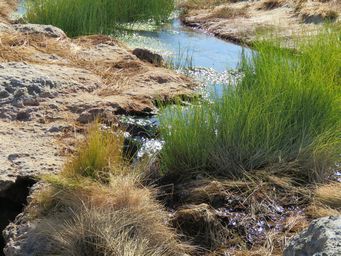
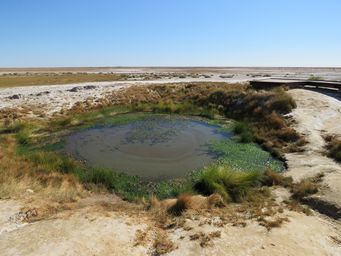

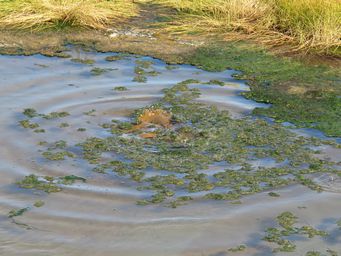
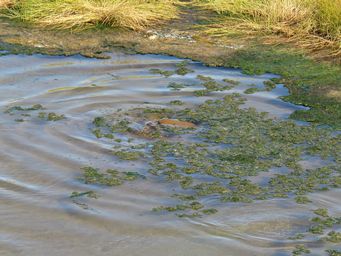
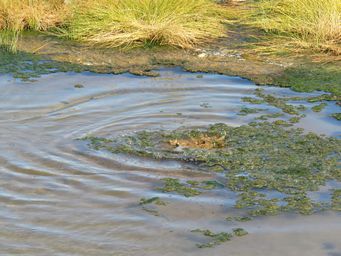
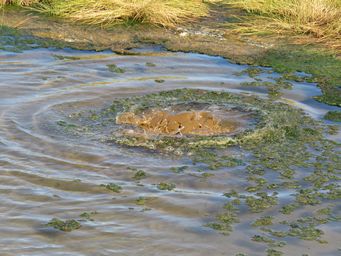
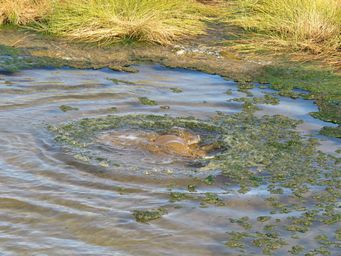
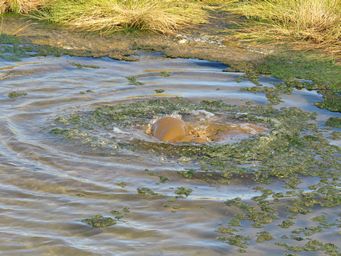
Here you’ll find Thirrka (or Blanche Cup) and Pirdali-nha (or The Bubbler).
Wabma Kadarbu Mound Springs Conservation Park was
established in 1996, with additional areas added to the Park in 2000. Prior to 1996, the land was part of the Stuart Creek pastoral
lease. However, the particular importance of Blanche Cup and the Bubbler has long been recognised, and protective fencing was established
around these springs in the mid-1980s through a partnership between the Stuart Creek lessees and the State Environment Department.
The
Old Ghan train line and the overland telegraph line followed water availability from the chain of mound springs, a route which the
Oodnadatta Track follows.
As graziers moved their livestock into the area, cattle grazed and watered over the mound springs,
damaging these environments, which were only seen a water sources by travellers and early settlers.
Pastoralists
brought their sheep and cattle, initially replying on the springs and later sinking Artesian bores.
There are an estimated 5,000 mound springs around the Great Artesian Basin.
The Bubbler (above), one of the mound springs in the Wabma Kadarbu Conservation Park, where warm water from deep underground bubbles up with brown spurts and noise. Deposits from the water has built from these fissures into mounds over the millennia.
Water overflowed down a channel and out onto the salt flats (below).
Wabma Kadarbu is the site of an Arabana Dreaming story, it literally translates to 'snake head'. Read on
The Creation of the Bubbler
As told by Reg Dodd of Arabunna Tours, Marree.
"This old hunter come round - they used to live here, big camp, used to be Gudnanamba... what's known as Curdimurka, Gudnanamba. He comes out one day, going hunting and he comes across this track, this strange snake track would come along. So he tracked
him up and the snake went into a home there off that Margaret Creek. So he dig the hole out.... He come to a dead end there,
nothing there, so he come back and then he dug that creek out and dug that hole out forming that creek that comes up to Margaret. Twisting there, too far, no, not in here.
So he went back, back down there by Horse Springs and started digging that little
creek now that runs into the Bubbler. We call the Bubbler Kiltaga, and that's where he pulled the snake out. He pulled
him out at the Bubbler. And then he took him over to the Blanche Cup there. We call that Thirka that's where he cooked
him in the thirka. And he pulled him out and he broke him up, he chucked the head away forming that hill Wabma Kadarbu there
and sat down, 'et that snake, and he caught a couple of little pigeons and a finch... And he took them back.
When he got
back to Gudnanamba the old woman said "Any?" He said "Only little sort of things". And the old woman looked at him and said
"You must be telling lies" 'cos all his whiskers shiny and all that see, all fat and that on it. So the old woman said "I fix
him up". So the old woman went down the creek there, started singing then and put a spell on him - singin' singin' there - next minute
that old fella started to get pains and, then he went down the creek he was laying down rollin' around in the creek. “Manadi"
swelled up then his testicles swelled up. And they sing out to all the people "Come and have a look, this old . . ." and he
was still rolling around and all the people were standing around looking at him. All bar the old woman and the girl who was
leading the old woman. They was up on top off the sand hills at Gudnanamba. The two little tea-tree there now that's the
old woman and ... and all the old people come there looking at the old fella next minute his manadi just exploded, busted. All
the lava and that turned unto little round rocks you got in there now in ten creek, Gudnanamba you find all these rocks here, well
that's the old fell's manadi.
But the moral behind the story is, young fella, is you got lolly there or something, or
something good, you gotta share, otherwise your manadi bust.
Resources
SA Parks Wabma Kadarbu Mound Springs
Wikipedia Wabma Kadarbu Mound Springs
Signage on site